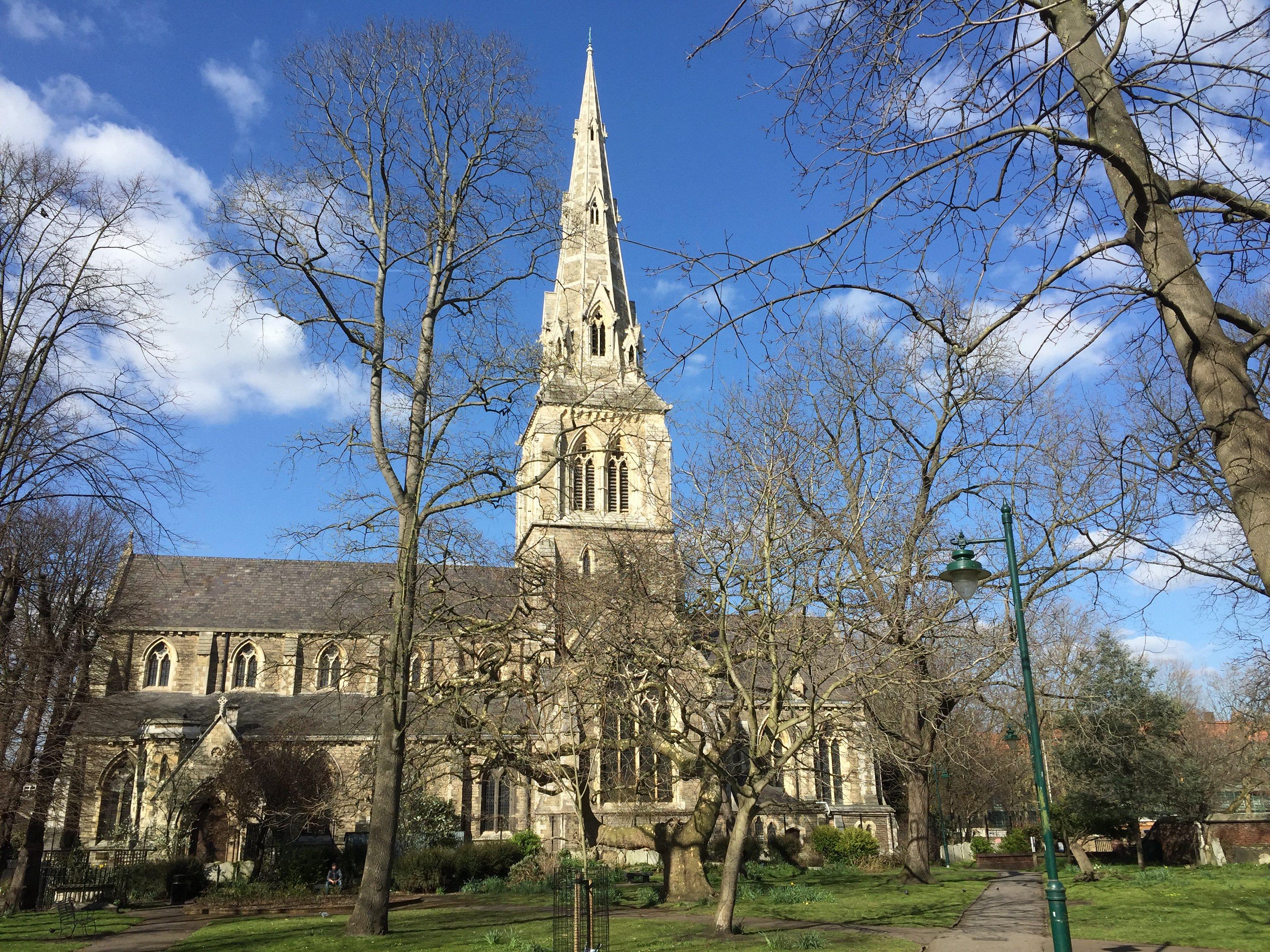Rye Lane Baptist Chapel
Peckham, Greater London
We warmly welcome visitors at Rye Lane Baptist Chapel; it is a Grade II listed building which boasts historical features in a fine Victorian nonconformist building.

Whether you live nearby or are thinking about visiting from further away, you will always be very welcome at St Giles.
Camberwell, Greater London
The Domesday book of 1086 found at Camberwell '22 villagers and 7 small-holders with land for 6 ploughs, a church, 63 acres of meadow and woodland providing 60 pigs'. Camberwell has obviously changed a lot since 1086.
The prefix of Camberwell, 'Cam' can be translated as 'crooked' and it’s likely that the area had natural springs. There’s a possibility that people suffering from ailments might have sought healing in the springs because the church is named after St Giles, the patron saint of beggars, poor people and people with physical disabilities. The early church mentioned in the Domesday book is considered by some to have dated from within sixty years of the first landing of St Augustine, or about the middle of the 7th century. It underwent extensive changes during the reign of King Stephen and was rebuilt in stone by William de Mellent, Earl of Gloucester and Lord of the Manor of Camberwell in 1154. Traces of this building probably survived in major rebuilds of the church in 1346 (according to Bishop Edindon’s Register at Winchester) and during the reign of Henry VIII. Before Henry’s reign, the vicars of the parish were appointed by the Abbey of Bermondsey until its dissolution.
In 1615, Edward Wilson, Vicar of St Giles founded Wilson’s Grammar School ‘for the sons of his parishioners’. The school was built next to St Giles and some of the later Victorian era buildings still survive, now used by Camberwell College of Arts, a constituent college of Universtiy of Arts London. Wilson’s Grammar School moved to Sutton in the 1970’s but the school still maintains links with St Giles to this day.
As the mother church of an ancient parish containing 4,450 acres, the church became the resting place of many notable citizens of Camberwell and it contained many tombs and memorials both above ground and in the crypts below. One of the monuments was dedicated to an Agnes Skinner, or Skuner, who died in 1515, at the age of 119, having survived her husband, it is said, no less than ninety two years! There were many other monuments to the Bowyer, Hunt and Scott families, members of which had lived and died in Camberwell for many centuries.
By 1792, the numerous alterations and extensions had created a church consisting of a nave, chancel, lady chapel and two aisles. As the population of a once rural village on the outskirts of London exploded in the early 1800s, it soon became clear that St Giles was too small and was regarded as an ‘architectural mess’.
The parish made plans to address this, fate intervened. The ‘Old and New London’ 1878:
'A fire broke out on the night of Sunday, the 7th of February, 1841, by which the building was completely destroyed. Funds were at once raised for its re-erection. The first stone of the new church was laid in September, 1842. It was erected from the designs of Messrs George Gilbert Scott and WB Moffatt. It is one of the finest and largest of the new parish churches in the kingdom. The style of architecture is the transition between the Early English and the Decorated, which prevailed at the close of the 13th century. The building is of a cruciform plan, with a central tower and spire, the latter rising to the height of about 210 feet. The walls of the church, which are of considerable thickness, are constructed chiefly of Kentish rag, with dressings of Caen stone. Several of the windows are enriched with stained glass'.
This building is the St Giles we see today. Since 1844, Camberwell has continued to change but the church has remained largely unaltered since. The Second World War inflicted damage on St Giles when some of the stained glass windows were destroyed by bombs. However, the east window, designed by John Ruskin remained intact and although the spire began to show cracks in the late 1990s, the top 72 ft was taken down and rebuilt in 2000.
Peckham, Greater London
We warmly welcome visitors at Rye Lane Baptist Chapel; it is a Grade II listed building which boasts historical features in a fine Victorian nonconformist building.
Walworth, Greater London
St Peter's is a vibrant and welcoming church, and a beautiful Grade I listed John Soane building in the heart of London.
Angell Town, Greater London
St John is an inclusive community church, welcoming in love, worshipping in faith and witnessing in hope to the love of God and the Good News of Christ in Angell Town and Brixton.